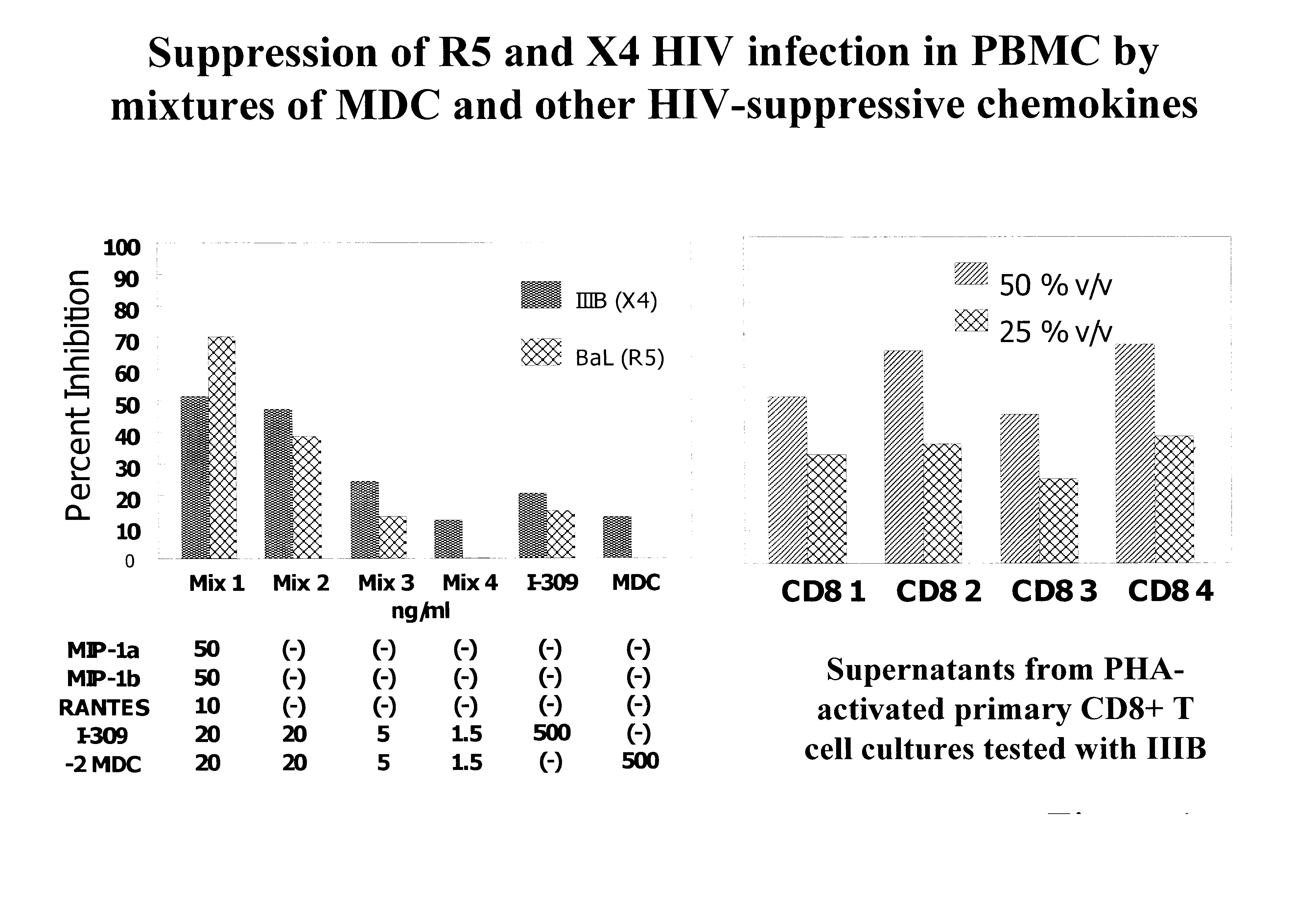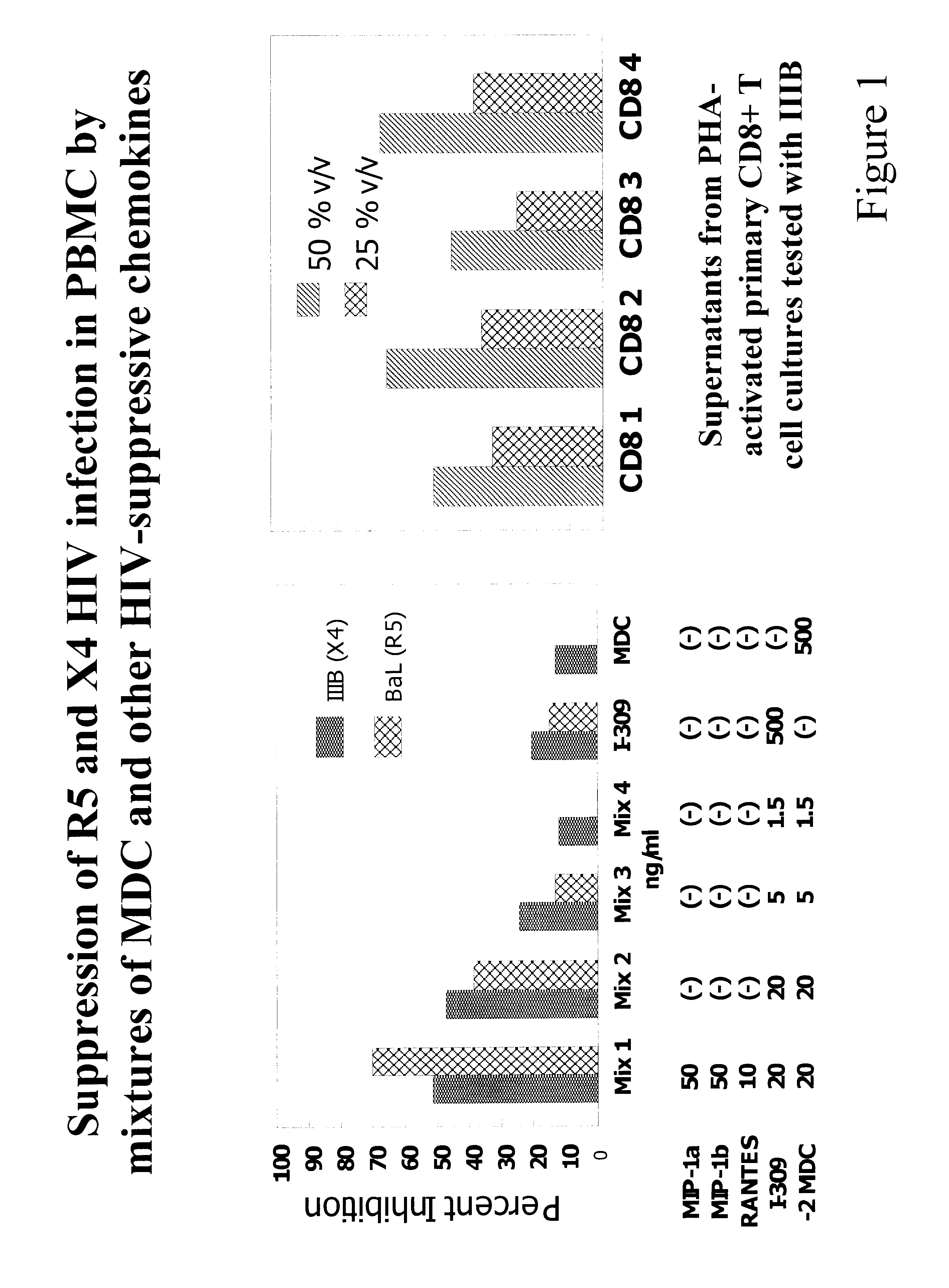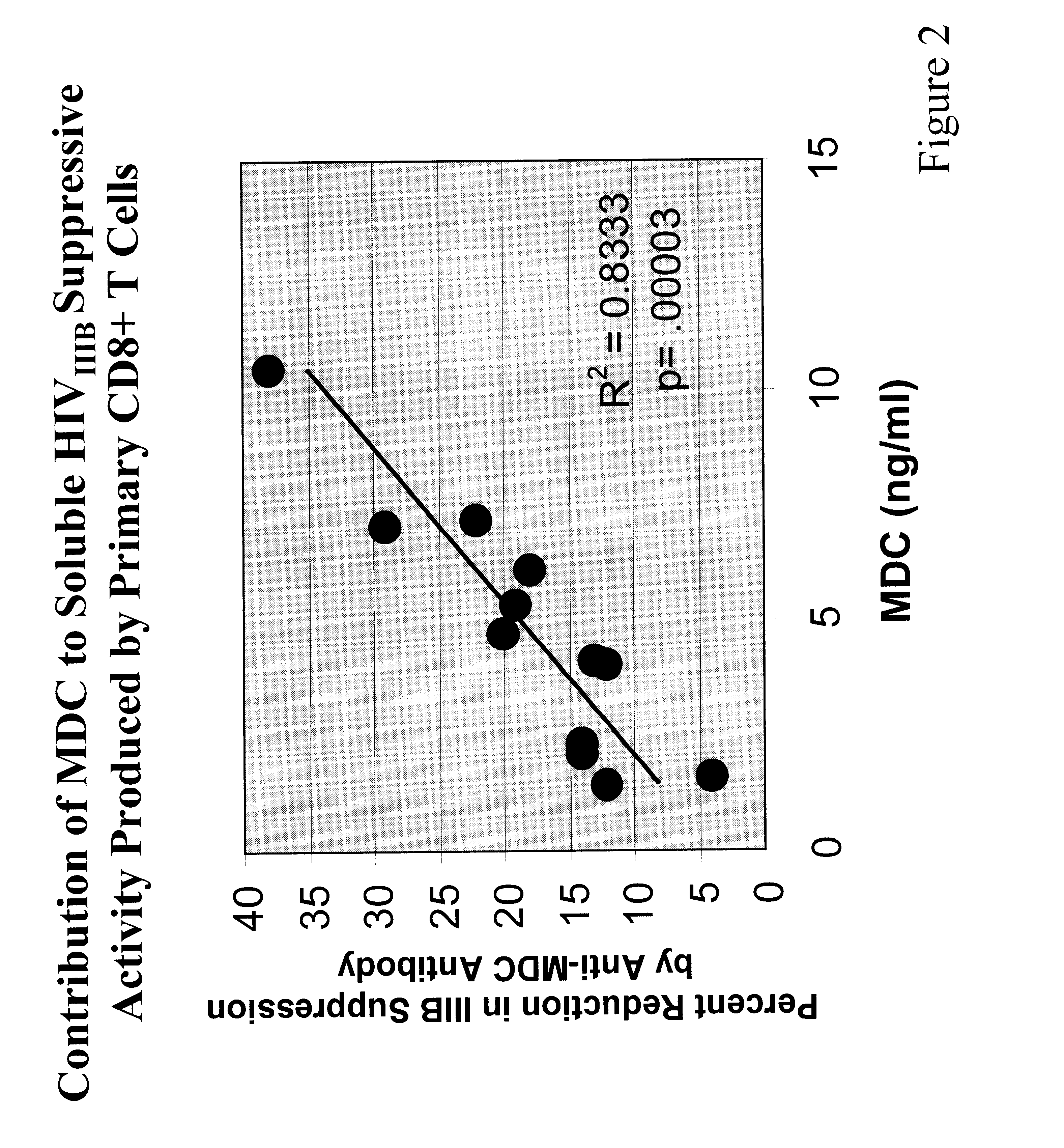Chemokine inhibition of immunodeficiency virus
a technology of immunodeficiency virus and chemokine, which is applied in the direction of immunodeficiency disorders, drug compositions, peptides, etc., can solve the problems of opportunistic infections, neoplastic growth, and death of primary hiv-1 isolates, and achieve the effect of reducing viral load
- Summary
- Abstract
- Description
- Claims
- Application Information
AI Technical Summary
Problems solved by technology
Method used
Image
Examples
Embodiment Construction
The present invention relates to therapeutic compositions comprising chemokines, nucleic acids encoding chemokines, or derivatives and / or analogs thereof or nucleic acids encoding the same, that are effective at inhibiting replication and / or infection of an immunodeficiency virus in vitro or in vivo, decreasing viral load, and / or treating or preventing diseases and disorders associated with human infection with an immunodeficiency virus. The immunodeficiency virus can be but is not limited to HIV, simian immunodeficiency virus, and feline immunodeficiency virus, and is most preferably HIV.
The invention also relates to therapeutic methods and compositions for the treatment and prevention of diseases and disorders associated with infection by immunodeficiency viruses, preferably HIV infections, by administration of chemokine preparations. The invention provides for treatment of HIV infection by administration of one or more therapeutic compositions of the invention. Therapeutic compou...
PUM
 Login to View More
Login to View More Abstract
Description
Claims
Application Information
 Login to View More
Login to View More - R&D
- Intellectual Property
- Life Sciences
- Materials
- Tech Scout
- Unparalleled Data Quality
- Higher Quality Content
- 60% Fewer Hallucinations
Browse by: Latest US Patents, China's latest patents, Technical Efficacy Thesaurus, Application Domain, Technology Topic, Popular Technical Reports.
© 2025 PatSnap. All rights reserved.Legal|Privacy policy|Modern Slavery Act Transparency Statement|Sitemap|About US| Contact US: help@patsnap.com



